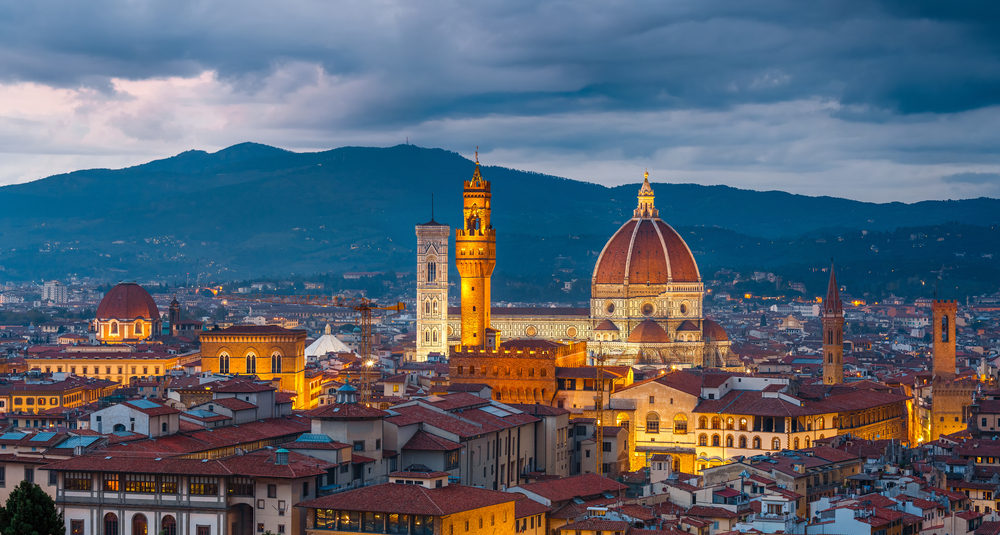

If you’re passionate about art and plan to visit multiple museums, consider purchasing the Firenze Card. It offers access to all cultural heritage museums for 3 days at €85; minors under 18 can enter for free (to give you an idea, visiting the Uffizi Gallery and the Accademia Gallery would alone cost €50 circa.)
The high season in Florence runs from April to October. The city center is compact and welcomes about 15 million visitors annually, with most arriving during these months. Coach tours and cruise ships heavily contribute to overcrowding. If you dislike crowds and long lines, this might not be the best time for you to visit.
In my opinion, the best times to visit the city without crowds and enjoy its museums are the shoulder seasons, from November to March (except for Christmas week, which is busy due to national tourism). The major museums, like the Uffizi Gallery and the Accademia Gallery, are highly enjoyable during this period.
On average, travelers spend 3 nights in Florence. Avoid trying to see everything in a short time (you’d need at least a month to truly experience Florence) and an exhausting agenda. Plan to include some guided tours that save you time but also leave space to discover your personal Florence.
If you must visit the Uffizi or Accademia museums, get the earliest tickets available in the morning. In summer, both museums also offer evening openings.
Alternatively, explore lesser-known but equally beautiful museums, such as the masterpieces housed in the Palatine Gallery at Palazzo Pitti or the Bargello; this 1250-year-old palace is already stunning in itself and is the most important museum in the world for Renaissance sculpture.
During June-August, prioritize morning tours and avoid afternoons when temperatures typically exceed 90°F. Pause your tour with a delicious gelato or coffee at one of the several historic cafés in town.
Take time to see the noble hills surrounding Florence. By taking bus no. 7 from the train station, you can reach Fiesole, a charming Etruscan village, and spend half a day away from the crowds.
The most visited part of the city (reasonably as it is the one more densely packed with historical weight, hence also the most crowded) is the area between Piazza Duomo and Piazza della Signoria. Outside this touristy area, you can explore other historical neighborhoods to help you capture the city’s authentic spirit. Do choose to visit the district of Santa Croce or Santa Maria Novella on the opposite part of town, or the delightful neighborhoods across the river in the Oltrarno area, such as San Niccolò, Santo Spirito, or Piazza del Carmine.
If you don’t have much time for museums, explore Florence’s unique squares and basilicas, many of which are free to enter and house extraordinary masterpieces. To cite some examples: In Santo Spirito the highlight to be found is a young Michelangelo’s wooden crucifix sculpture; in Ognissanti is Botticelli’s burial and his St. Augustin, the only Botticelli to be found in a church; in Santa Trinita admire painter Ghirlandaio’s Sassetti Chapel.
A great way to immerse yourself in local culture is by visiting a food market. The two main ones are San Lorenzo (near the train station) and Sant’Ambrogio (near Santa Croce). They are also great options to savour the variety of Florentine culinary traditions (**the upper level in San Lorenzo is a food court and is a great restaurant option in low season, but to be avoided April to October, way too busy).
In the coolest spring and fall months (therefore avoiding June-August), venture outside the old stones of the city center to visit magnificent gardens on the hills of the Oltrarno. A €10 ticket grants you access to both Boboli and Bardini Gardens. Other garden visits in the cool season could include the smaller and more secret Rose Garden and the Iris Garden. Another option is visiting the eclectic style of the Torrigiani Garden, the largest privately owned garden in Europe.
The Florence Cathedral (Duomo) is open to the public for free, usually from 10 am to 4 pm (except Sundays); lines are typically very long during the high season. Unlike its richly decorated marble exterior, the interior is grand yet relatively simple, reflecting its spiritual purpose. Instead, consider visiting the Basilica of Santa Croce, one of the most art-rich sites in Florence; lines will be avoided.
While Piazzale Michelangelo is the most famous, I recommend a walk to Forte Belvedere. This 1600’s fortress built by the Medici architect Buontalenti (open from June to September) is far less touristy, offers breathtaking views, and has a lovely bar for enjoying a cocktail.
I wouldn’t personally recommend standing the long lines at All’Antico Vinaio for a sandwich as better and equally good options can be found in town. Sometimes, what goes viral isn’t necessarily the best choice and can make your journey look a bit flat, so a suggestion here would be to do the opposite of what your mobile actually says ☺.
There are so many options, therefore also lots of tourist traps. Generally, restaurants in the city center ‘quadrilateral’ tend to be tourist-oriented. My suggestion is to venture outside the area between the Duomo and Piazza della Signoria for more authentic dining experiences.
